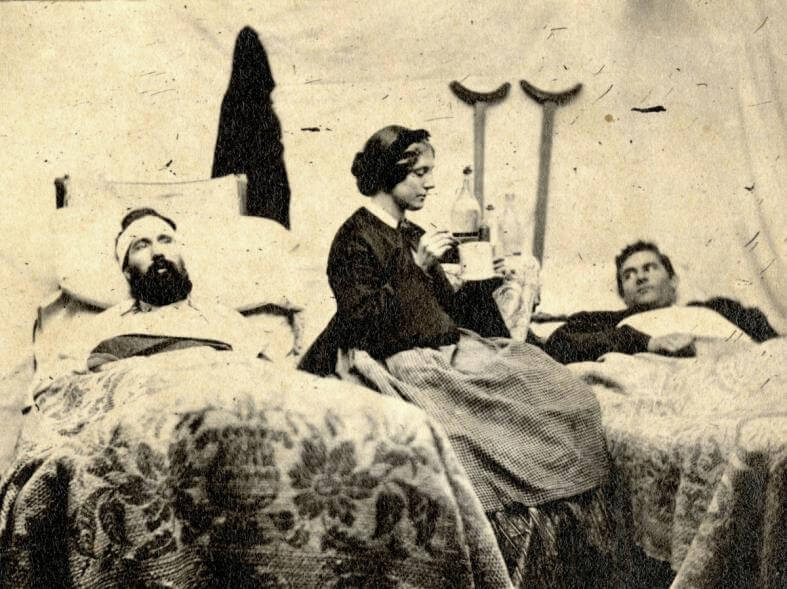
Of the more than 3,500 Congressional Medal of Honor recipients, Mary Edwards Walker is the first and only female recipient of this high commendation. It’s a stunning statistic that lags well behind other social advances of the past 150 years. But the story of how one woman earned the armed forces’ highest recognition is an impressive study of both courage and compassion.
Born in 1832 as the youngest of seven children, Mary grew up on a family farm in Oswego, New York. Alvah and Vesta Walker were industrious and intelligent parents with progressive and nontraditional (for the time) approaches to education and childrearing that planted seeds of independent thinking, equality, and a sense of justice that would soon blossom.
Everyone worked on the farm, and Mary and her sisters were encouraged not to restrict themselves to traditional gender roles and, for that matter, the restrictive dresses, petticoats, and other women’s clothing of the times. When the suffragette movement built up steam in 1848, Mary boldly created her trademark “reform dress” of a swallowtail coat worn over trousers with a starched shirt and a bow tie. “I don’t wear men’s clothes, I wear my own clothes.” She was 15.
Mary became interested in medicine from leafing through her father’s journals and went on to earn a medical degree, graduating with honors from Syracuse Medical College in 1855 as a doctor and the only woman in her class. True to her obstinate nonconformity to the mores of her times, when she married a fellow medical school student, she demanded that “obey” be stricken from her vows and retained her last name. And while attending Bowen Collegiate Institute in Iowa, she was suspended for refusing to resign from the school’s debating society, which until she joined had been all male.
In 1860 Abraham Lincoln accepted his party’s nomination for president and war loomed on the horizon. At a time when women weren’t considered fit to serve on the front lines of military service, Dr. Walker worked as an unpaid civilian surgeon, serving in several battles and at a field hospital set up in front of the U.S. Patent Office in Washington D.C. She continued to speak her mind and challenge authority as she cared for Union soldiers wounded in battle.
In 1862 Mary wrote to Secretary of War Edwin Stanton with an unusual request: she wanted to be deployed as a spy. Stanton wasn’t interested but General George Henry Thomas took Mary up on her offer and dispatched her to spy in Northern Georgia. On April 10, 1864, she was captured by Confederate troops and arrested, just after she finished helping a Confederate doctor perform an amputation. She was held as a prisoner of war for four months in a Richmond prison before her release as part of a prisoner exchange—for a male Confederate surgeon, ironically.
Mary went on to earn a paid contract as Acting Assistant Surgeon with the Ohio 52nd Infantry, becoming the Army’s first female surgeon. After the war ended, she was awarded the newly created Medal of Honor for devoting herself “with much patriotic zeal to the sick and wounded soldiers…to the detriment of her own health.”
After the war, Dr. Walker became a writer and lecturer, supporting issues like health care, temperance, women’s rights, and dress reform for women. She lived out the last years of her life as an ardent supporter of the women’s suffrage movement. She died at home in 1919 at the age of 86, one year before the 19th Amendment to the U.S. Constitution was passed which guaranteed women the right to vote.
Fast forwarding to the 21st century, how does Ms. Walker’s sense of obstinate nonconformity play out in modern-day business and leadership contexts? Common buzz-phrases like “thinking outside the box” or “disruptive innovation” come to mind yet feel woefully anemic when compared to Mary’s grit and determination and lifetime of challenging the status quo.
We want our teams to generate ideas and solutions to problems that create impactful change in our industries and communities, and yet we are sometimes underwhelmed by the results. How do leaders create an environment where unconventional thinking, approaches, and roles are embraced and celebrated? This requires a steady devotion to instilling a culture where risk-taking is not only tolerated but encouraged, where mistakes are not career-limiting but career-enhancing.
For me it can be boiled down to one word: Safety. When leaders resist the urge to “shoot the messenger” when things miss their marks, and instead create an atmosphere that’s free from fear of failure and its consequences, then we begin to truly get outside that box. Try this: Praise team members who push against norms. Allow those some of those unorthodox ideas to really be tried. Adopt a mindset of “why not” instead of “probably not.” Only then will your organization’s potentially groundbreaking work get off the cutting room floor and become something of real consequence—not only for your company or your industry, maybe even the world.

